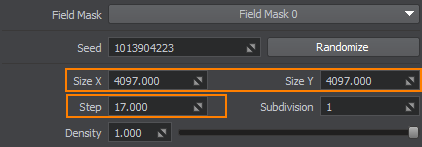Optimizing Grass
Rendering of the Grass object can also reduce the performance. Grass optimization means reducing the number of the grass polygons rendered each frame. This can be achieved by using the specific grass settings.
Setting Up Step for Cell Division#
For optimization purposes, the grass field is split into cells forming a grid. These cells are rendered one by one, from the camera to the horizon. Each cell requires 1 DIP call, so the higher number of cells, the lower the performance. The number of cells is determined by two parameters - the Size of the grass field and the Step by which the grass field is split into cells.

There are two requirements for these parameters that should be met:
- The size of the field should be divided by the step exactly, with no remainder by division.
- The step value should stay within the recommended optimal range of [10;25], as the small enough cells are rendered fast and smoothly while the large cells may take more time for rendering.
For example, if the size of the grass field is 4097 x 4097, the recommended Step value is 17. It is in the range and the field size is divided by this value exactly.
Thinning Grass#
Except reducing the number of cells rendered per frame, the grass field can be thinned out with a distance. For this, enable the Thinning option to reduce the number of grass polygons rendered across the grass Fade distance.

The information on this page is valid for UNIGINE 2.19 SDK.